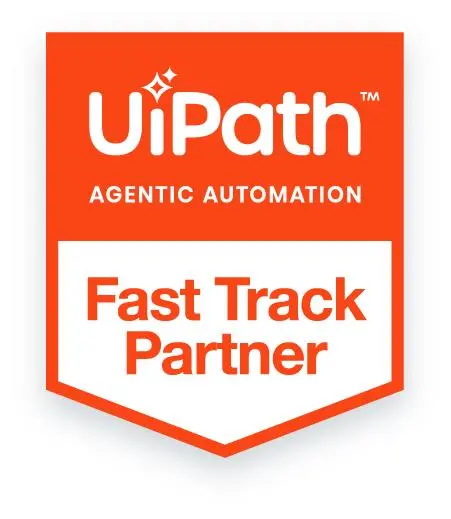
Key Takeaways
- PA is rule-based and ideal for simple, repetitive tasks—but limited in scale and intelligence.
- Agentic AI enables autonomous decision-making, learning, and handling of multi-step processes.
- RPA delivers quick wins, while Agentic AI delivers long-term, compounding returns on investment (ROI).
- Use cases like forecasting, onboarding, and customer support are better suited to Agentic AI.
- The future belongs to goal-driven, adaptive, intelligent automation ecosystems.
In the last decade, automation has transitioned from a futuristic buzzword to a critical business function. Robotic Process Automation (RPA) led this wave, automating repetitive tasks and delivering quick wins. However, with increasing data complexity, process variability, and a growing demand for real-time decision-making, businesses are beginning to realize that traditional RPA is not enough.
Enter Agentic AI—a newer, more intelligent automation approach. These autonomous software agents can learn, reason, and execute tasks independently across departments and systems.
This blog explores how RPA and Agentic AI compare in terms of Return on Investment (ROI) and why more organizations are leaning toward Agentic AI for long-term transformation.
Also read: What Are Agentic AI Agents? A Beginner’s Guide for Enterprises
Understanding ROI in Business Automation
ROI is the most critical metric for evaluating the success of automation initiatives. It’s not just about saving costs—it’s about delivering sustainable business value.
Components of ROI:
- Labor cost reduction
- Faster process turnaround time
- Improved accuracy and compliance
- Scalability across workflows
- Customer and employee satisfaction
- Strategic agility and adaptability
The ROI formula is straightforward: ROI (%) = ((Benefit – Cost) / Cost) × 100
However, when comparing RPA and Agentic AI, we must go beyond this formula and consider qualitative value creation.
What Is Traditional RPA?
Robotic Process Automation (RPA) uses bots to follow scripted, rule-based instructions—much like a digital version of a human repeating a set of clicks or keystrokes.
Core Features:
- Operates on structured, repetitive tasks
- Follows “if-this-then-that” logic
- Works well with legacy systems
- Requires stable UIs and clear inputs
Standard RPA Use Cases:
- Invoice data entry
- Copy-pasting between systems
- Automating payroll reports
- Email sorting or routing
Benefits:
- Fast deployment (within weeks)
- No need for API-level integration
- Easy to justify with cost-saving numbers
However, its limitations become apparent as processes become more variable, multi-step, and dynamic.
What Is Agentic AI?
Agentic AI represents a new paradigm. These are autonomous agents powered by AI models, such as large language models (LLMs), that can understand goals, operate in unstructured environments, and collaborate with other systems or agents.
Defining Attributes:
- Operates based on intent or goals, not rules
- Has memory and can learn from feedback
- Communicates and coordinates with other agents
- Functions across applications, departments, and data types
Examples:
- A procurement agent that negotiates vendor terms based on pricing trends
- An HR agent who guides new hires, schedules sessions, and escalates unique cases
- A financial agent that predicts risk, flags anomalies, and explains deviations
These agents adapt to context, making them powerful for complex enterprise workflows.
ROI Metrics: What Matters?
When assessing RPA and Agentic AI, companies should examine both the tactical and strategic return on investment (ROI).
| ROI Dimension | Importance |
| Cost Savings | Tactical |
| Speed to Deployment | Tactical |
| Process Resilience | Strategic |
| Cognitive Decision-Making | Strategic |
| Human Escalation Reduction | Strategic |
| Workflow Elimination | Strategic |
Agentic AI delivers both tactical and strategic ROI, while RPA often stops at the tactical level.
Traditional RPA ROI: Strengths and Limitations
Where RPA Shines:
- Quick wins in structured environments
- Low-code deployment with existing IT stacks
- Labor savings on routine operations
Limitations:
- ROI tapers off after the first 6–12 months
- High maintenance as bots break with UI/API changes.
- No ability to learn or make decisions
- Difficult to scale across workflows
In short, RPA is a good starter tool—but it’s not built for dynamic, cross-functional processes.
Agentic AI ROI: Where It Excels
Advantages Over Time:
- Learns and improves continuously
- Reduces human escalations by up to 60%
- Can self-heal, reducing long-term maintenance
- Delivers 4x–5x ROI in many enterprise scenarios
Agentic AI doesn’t just reduce cost—it increases strategic capacity, helping enterprises respond faster to changes, make better decisions, and optimize end-to-end operations.
Comparative Table: RPA vs. Agentic AI
| Feature | Traditional RPA | Agentic AI |
| Setup Cost | Low to Medium | Medium to High |
| Adaptability | Low (brittle to change) | High (dynamic, goal-driven) |
| Exception Handling | Manual | Autonomous or escalated intelligently |
| Maintenance | High | Lower over time (self-correcting) |
| Speed to ROI | Fast (3–6 months) | Moderate (6–12 months) |
| Long-Term ROI | 1.5x–2.2x (Deloitte) | 4x–5x (McKinsey + Auxiliobits) |
| Scalability | Siloed | System-wide across departments |
| Cognitive Capability | None | Yes – reasoning, natural language, memory |
Use Case Analysis: ROI Impact
Let’s look at standard processes and how ROI differs:
| Use Case | RPA ROI | Agentic AI ROI |
| Invoice Processing | Automates data entry | Flags fraud, learns formats, and requests updates |
| Vendor Onboarding | Sends forms | Verifies details, follows up, and scores risk |
| Customer Service | Routes emails | Resolves Level 1 issues with brilliant dialogue |
| Financial Forecasting | Not feasible | Simulates outcomes, explains trends |
| HR Onboarding | Form automation | End-to-end guidance across systems |
In each case, Agentic AI doesn’t just assist—it transforms how work gets done.
Cost vs. Value Considerations
RPA:
- Lower upfront cost
- Quick ROI on repetitive tasks
- Higher long-term cost due to breakage and manual handling
Agentic AI:
- Higher initial investment
- Slower start but exponential ROI
- Lower maintenance, higher coverage
The value generated by Agentic AI extends beyond cost savings to include operational excellence and business agility.
Adoption Challenges and How to Overcome Them
Common Challenges:
- Lack of internal AI expertise
- Fear of AI replacing humans
- Difficulty identifying agent-worthy use cases
- Compliance concerns over decision autonomy
Solutions:
- Start with one goal-driven workflow (e.g., onboarding, invoicing)
- Use agent orchestration platforms (LangGraph, AutoGen)
- Educate teams on augmentation, not replacement.
- Implement explainability and a fallback mechanism.
Strategic Guidance for Enterprises
- Don’t compare RPA and Agentic AI as like-for-like. One automates clicks, the other automates thinking.
- Identify high-friction, cross-functional processes as a pilot area for improvements.
- Treat agents as digital employees—give them clear goals and monitor their outcomes.
- Build governance early: agents must log actions, explain reasoning, and allow overrides.
- Partner with experts in Agentic Process Automation (APA) to accelerate time to value.
Final Thoughts
RPA represented a significant leap in process efficiency. It allowed businesses to automate tasks without substantial investments. But that era is nearing its peak. Static bots can’t solve dynamic problems.
Agentic AI is the future—it enables automation that thinks, adapts, and improves continuously. The ROI isn’t just bigger—it’s brighter, deeper, and more sustainable.
For enterprises looking beyond cost-cutting—toward growth, innovation, and resilience—Agentic AI is not just an option; it’s a necessity. It’s the next necessary step.








